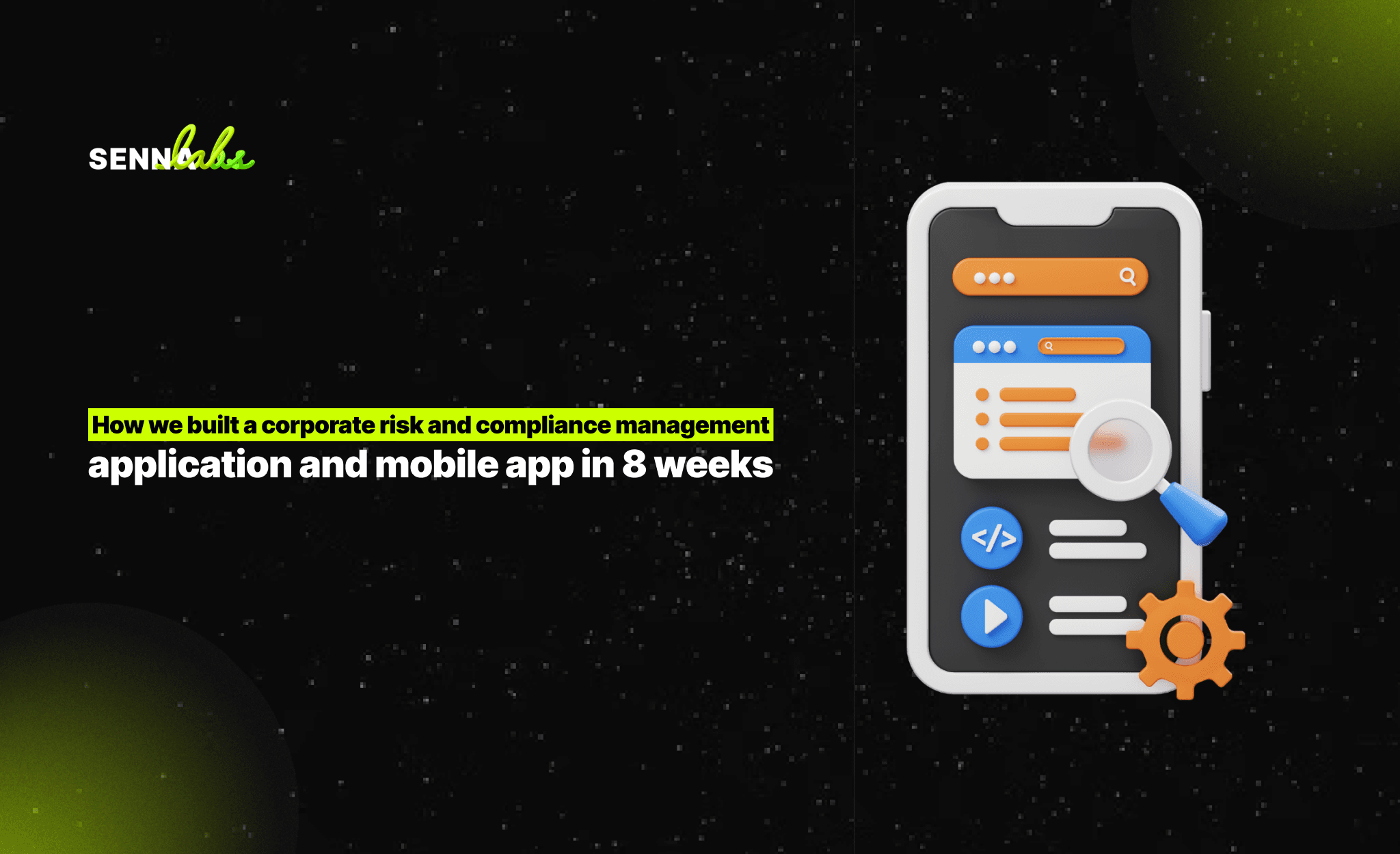React Native in Education: Building Engaging Learning Platforms

In the modern education landscape, the rise of digital learning platforms has transformed the way students engage with their studies. Traditional methods of education are being enhanced and, in many cases, replaced by online and mobile learning systems that make education accessible from anywhere, anytime. With the increasing use of mobile devices, learning platforms must now be adaptable and optimized for a wide range of users on different devices. React Native, a popular cross-platform development framework, is becoming a go-to solution for building engaging learning platforms that deliver seamless experiences across both iOS and Android devices.
This article explores how React Native is revolutionizing educational platforms by making them more accessible, interactive, and engaging for students. We will also examine a real-world use case where an educational platform developed a learning management system (LMS) using React Native, leading to a 30% improvement in student engagement and course completion rates.

The Role of Technology in Modern Education
The shift to digital learning has become more evident over the last decade, particularly in recent years as students and educators have adopted mobile devices for online learning. Learning management systems (LMS) and educational apps now offer students the flexibility to learn at their own pace, connect with peers and instructors in real time, and access a wide range of resources without the need to be physically present in a classroom.
Key benefits of mobile learning platforms include:
-
Accessibility: Students can access learning materials from anywhere, at any time, making it easier for those in different geographical locations or with varying schedules to participate in education.
-
Flexibility: Learners can study at their own pace, revisit materials, and manage their learning schedules based on their individual needs and preferences.
-
Engagement: Interactive elements such as quizzes, video lectures, and collaborative tools keep students engaged and motivated throughout the learning process.
-
Personalization: Mobile apps can offer personalized learning experiences by tracking students’ progress and recommending relevant resources based on their performance.
However, for an educational platform to succeed, it must offer a seamless, engaging, and responsive user experience across all devices. This is where React Native plays a pivotal role.
Why React Native for Educational Platforms?
React Native is an open-source framework created by Facebook that allows developers to build mobile applications using JavaScript and React. One of the key advantages of React Native is its ability to create cross-platform apps using a single codebase, meaning that apps built with React Native can run on both iOS and Android without requiring separate development for each platform. This is particularly beneficial for educational platforms, as they must be accessible to a diverse audience of students using a wide range of devices.
Here’s why React Native is the ideal choice for building learning platforms:
1. Cross-Platform Compatibility
One of the most significant challenges for educational platforms is ensuring compatibility across multiple devices and operating systems. Many students use both iOS and Android devices, and educational institutions need to provide a consistent user experience on both platforms. Developing separate native apps for iOS and Android can be time-consuming and expensive.
With React Native, developers can build a single app that works on both platforms, significantly reducing development time and costs. This cross-platform capability ensures that all students, regardless of their device, can access the learning platform with ease.
2. Smooth Performance and Native-Like Experience
Performance is a critical factor in ensuring that students have a positive experience when using an educational app. React Native allows developers to build apps that offer a near-native experience in terms of speed, responsiveness, and user interaction. This is important for features like video playback, quizzes, and real-time chat, which are commonly used in learning platforms.
React Native’s ability to render components into native code ensures that the app runs smoothly across different devices, providing students with a fast and reliable experience. This is particularly crucial for keeping students engaged and preventing frustration caused by slow load times or app crashes.
3. Fast Development and Iteration
Educational platforms must be continuously updated with new features, resources, and improvements to meet the evolving needs of students and educators. React Native’s hot reloading feature allows developers to see the results of code changes in real time without having to restart the app. This speeds up the development and testing process, allowing educational platforms to iterate quickly and release updates faster.
Additionally, React Native’s modular architecture allows developers to work on specific features without disrupting the entire app. This means that new features—such as adding new courses, creating interactive assessments, or integrating gamification elements—can be developed and implemented more efficiently.
4. Integration with Third-Party Libraries and Tools
React Native supports a wide range of third-party libraries and APIs, making it easy to integrate additional functionalities into an educational platform. For example, developers can integrate video conferencing tools, real-time chat, analytics, and content delivery networks (CDNs) to enhance the learning experience.
Additionally, React Native apps can integrate with cloud-based services such as Firebase or AWS to support real-time data synchronization, allowing students to access updated learning materials, submit assignments, and track their progress across devices.
Building an Engaging Learning Platform with React Native: A Use Case
To better understand the impact of React Native on educational platforms, let’s look at a real-world example of how a learning management system (LMS) was developed using React Native to improve student engagement and completion rates.
The Challenge
An educational platform wanted to create a mobile-first LMS that allowed students to access their courses, interact with instructors, and complete assessments from any mobile device. The platform’s goal was to improve student engagement by making the learning experience more interactive and accessible on mobile devices. However, they faced several challenges:
-
Cross-Platform Development: The platform needed to be accessible to students on both iOS and Android, but developing separate native apps would have been too costly and time-consuming.
-
Real-Time Interactions: The platform needed to support real-time features such as live video lectures, real-time messaging between students and instructors, and collaborative discussions.
-
User Engagement: The platform sought to improve student engagement by integrating interactive elements such as quizzes, video content, and personalized learning paths.
The Solution: React Native
The development team chose React Native to build the learning platform because of its ability to create cross-platform apps with a single codebase. This approach allowed the platform to be launched on both iOS and Android simultaneously, ensuring that all students had access to the same learning tools and resources.
Here’s how React Native helped the platform achieve its goals:
1. Cross-Platform Learning Experience
By using React Native, the platform was able to build a seamless learning experience for both iOS and Android users. Students could access their courses, track their progress, and participate in discussions from any mobile device. The app offered consistent performance across platforms, ensuring that students on different devices had the same high-quality learning experience.
2. Real-Time Features for Enhanced Engagement
React Native’s ability to integrate with real-time communication tools allowed the platform to support live video lectures and real-time messaging between students and instructors. This feature enhanced the interactive nature of the platform, making it easier for students to ask questions, participate in discussions, and collaborate on group projects.
Additionally, the platform integrated real-time quizzes and assessments that provided immediate feedback to students. This instant feedback helped students stay engaged and motivated throughout their learning journey.
3. Personalized Learning Paths
To improve student engagement, the platform used React Native to implement personalized learning paths based on each student’s performance and preferences. The app tracked students’ progress in real time and recommended additional resources or courses based on their individual needs. This personalization made the learning experience more relevant and engaging for each student.
4. Video Content and Interactive Assessments
The platform integrated video content and interactive assessments to keep students engaged. React Native’s support for media components allowed the app to deliver high-quality video content that students could watch on demand. Additionally, the platform used React Native’s component-based architecture to create interactive assessments that students could complete within the app.
5. Analytics and Progress Tracking
The platform integrated real-time analytics to track students’ progress and engagement. Instructors could monitor how students were interacting with the platform, which courses were most popular, and where students were facing challenges. This data helped instructors provide personalized support and interventions to improve student outcomes.
The Results
After implementing the learning management system using React Native, the platform saw significant improvements in student engagement and course completion rates:
-
30% Improvement in Student Engagement: The combination of real-time interactions, personalized learning paths, and interactive assessments led to a 30% increase in student engagement. Students were more actively involved in their courses and participated in discussions more frequently.
-
Higher Course Completion Rates: The platform’s personalized learning paths and interactive content helped students stay on track with their studies, leading to higher course completion rates. Students appreciated the flexibility and accessibility of being able to complete their courses from any mobile device.
-
Reduced Development Costs and Time-to-Market: By using React Native, the platform was able to reduce development costs by 40% compared to native development. The team also launched the app several months ahead of schedule, allowing students to start using the platform sooner.
Conclusion
React Native has become a game-changer for educational platforms, offering the flexibility, scalability, and performance needed to create engaging learning experiences. By enabling cross-platform development with a single codebase, React Native allows educational institutions and e-learning providers to reach a wider audience while reducing development costs and time-to-market.
In the case of the LMS discussed in this article, React Native helped the platform deliver a personalized, interactive, and seamless learning experience across both iOS and Android devices. The result was a 30% improvement in student engagement and higher course completion rates.
Whether you’re building a learning management system, an educational app, or a mobile-first e-learning platform, React Native provides the tools and capabilities to create engaging, responsive, and high-performance apps that meet the needs of modern learners.


Subscribe to follow product news, latest in technology, solutions, and updates
Other articles for you



Let’s build digital products that are simply awesome !
We will get back to you within 24 hours!Go to contact us Please tell us your ideas.
Please tell us your ideas.







